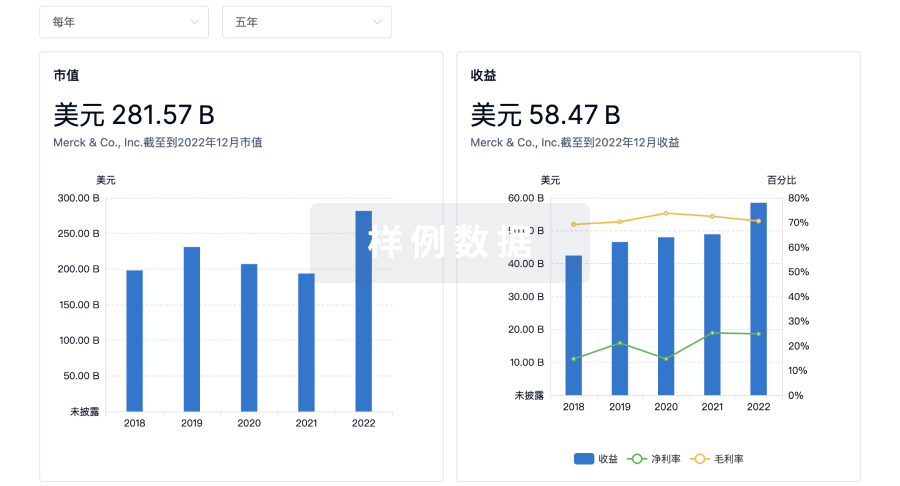更新于:2024-11-01

Genomic Prediction, Inc.
更新于:2024-11-01
概览
关联
6
项与 Genomic Prediction, Inc. 相关的临床试验Evaluation of Cell Free Preimplantation Genetic Testing
This study aims to develop preimplantation genetic testing methods from embryo culture media (cell free). Genetic testing of culture media will be compared to conventional methods based on embryo biopsies.
开始日期2024-06-11 |
申办/合作机构 |
GEnetic Testing in Elective Single Embryo Transfer (GETSET): A Randomized Clinical Trial
The GETSET trial is a prospective randomized trial designed to evaluate the clinical outcomes of incorporating preimplantation genetic testing for aneuploidies (PGT-A) in elective single embryo transfer in women between 35 and 40 years of age.
开始日期2023-11-15 |
申办/合作机构  Genomic Prediction, Inc.初创企业 Genomic Prediction, Inc.初创企业 [+1] |
GEnetic Testing in Elective Single Embryo Transfer in Women of Advanced Maternal Age
The GETSET trial is a prospective randomized trial designed to evaluate the clinical outcomes of incorporating preimplantation genetic testing for aneuploidies (PGT-A) in elective single embryo transfer in women between 35 and 40 years of age.
开始日期2021-03-05 |
申办/合作机构 |
100 项与 Genomic Prediction, Inc. 相关的临床结果
登录后查看更多信息
0 项与 Genomic Prediction, Inc. 相关的专利(医药)
登录后查看更多信息
12
项与 Genomic Prediction, Inc. 相关的文献(医药)2024-03-05·Human Reproduction Open
The severity of meiotic aneuploidy is associated with altered morphokinetic variables of mouse oocyte maturation
Article
作者: Lee, Hoi Chang ; Treff, Nathan R ; Zhu, Yiru ; Kratka, Caroline E ; Kratka, Catherine R ; Duncan, Francesca E ; Pea, Jeffrey ; Xu, Jia ; Marin, Diego
2024-01-01·Journal of Assisted Reproduction and Genetics
High-resolution PGT-A results in incidental identification of patients with small pathogenic copy number variants
Article
作者: Treff, Nathan R ; Xu, Jia ; Marin, Diego ; Leahy, Deirdre ; Eccles, Jennifer
2023-05-01·F&S Science
Accurate detection and frequency of abnormal ploidy in the human blastocyst
Article
作者: Garrisi, John ; Kratka, Catherine ; Vadapalli, Padma Samhita ; Mendola, Robert ; Marin, Diego ; Treff, Nathan R ; Xu, Jia
4
项与 Genomic Prediction, Inc. 相关的新闻(医药)2023-03-26
·药明康德
▎药明康德内容团队编辑如果你想要生一个孩子,医生告诉你有一种免费、安全的方法,能让你选出智力最高的胚胎,让他进入顶尖大学的概率提升2%,你会同意使用吗?一项最新的调查发现,超过40%的美国人会这么做。这不是什么天方夜谭。事实上,第一个通过类似技术进行筛选的孩子已经诞生,今天已经快3岁了……首位基因筛选婴儿的诞生拉法尔(Rafal Smigrodzki)是一位神经学家,对前沿技术的发展很感兴趣。一日,他碰巧读到了《麻省理工科技评论》上的一篇报道。文中,作者介绍了一种胚胎筛查技术,并担心它会成为新时代的优生学,增加社会的不平等。文章甚至拿1997年的反乌托邦电影《千钧一发》做比——社会被分裂成两派,一派的基因出自天然,另一派的经过人为筛选。批判声中,拉法尔却有着别样的观感。他和女友年纪都大了,但依旧想要属于自己的孩子。当时,留给他们的唯一生育机会,就是试管婴儿。他们找到了报道中提到的Genomic Prediction公司,后者说可以筛选它们的胚胎,查找一系列疾病的风险。他们使用的是一种叫做PGT-P的技术,需要和提供试管婴儿服务的医院合作,从胚胎中分离出细胞,做基因测序,分析其中的一些突变,判断这个胚胎成长中会出现的疾病风险。为了协助用户做判断,该公司还会给所有胚胎打上一个分数。显然,只有分数最高的胚胎才有机会存活。不少试管婴儿的专家拒绝了拉法尔及女友的请求,认为这样的要求“不道德”。拉法尔表示不赞同,如果一项技术能对自己的孩子有利,为什么会不道德呢?在他看来,这就像是孕期服用维生素那样具有合理性。最终,他们还是找到了愿意为他们做试管婴儿,以及胚胎筛查的医生。从16个胚胎中,他们挑出了5个进行基因测序。其中一个具有染色体异常,剩余四个则根据未来罹患癌症、糖尿病、高血压等疾病的风险,被打出了分数。拉法尔挑出了一个总体健康分数最高的胚胎用来受孕。▲拉法尔与奥雷娅(图片来源:参考资料[1];Courtesy of Rafal Smigrodzki)十月怀胎后,他们的女儿奥雷娅(Aurea Yenmai Smigrodzki)呱呱落地。刚出生的她不会知道,自己的命运经过了父母的精心挑选,成为了世界上第一个应用PGT-P技术的人。根据评分,她更有可能过上无病无灾的长寿人生。“我希望她会感到高兴。”拉法尔说。这种技术究竟多靠谱?从机理上看,PGT-P技术并没有什么特别。无论是在动物还是植物的育种里,研究人员们都会做类似的评分,用最大的可能产出健康的后代。试管婴儿筛选的技术也很常见——进行体外授精后,医生们总会有一个初步的挑选,去除那些染色体出现异常的胚胎。但像Genomic Prediction这样的公司则对这个过程进行了迭代。“随着时间推移,基因测序变得越来越便宜,也越来越可及。与此同时,遗传数据库也变得越来越丰富。”该公司的共同创始人史蒂芬(Stephen Hsu)说道。利用机器学习方法,可以很快找到其中一些和疾病相关的特征。他也指出,PGT-P可以对大量的遗传多样性进行分析,这涉及到了整个基因组中成千上万个不同的变异位点。相反,传统的筛查方法往往只能针对特定的基因进行检测,譬如是囊性纤维化相关基因,或是其他单基因遗传病相关的基因。图片来源:123RF自奥雷娅诞生后,Genomic Prediction又陆陆续续完成了约200个胚胎的筛查与打分,让依赖这一技术出生的婴儿数增加了几个数量级。其研究称,利用该公司的技术,新出生的婴儿罹患心脏病的风险会降低46%,2型糖尿病的发病概率降低42%。“我们能轻易找到风险仅为正常水平十分之一的人,这是一个极大的进步。”史蒂芬补充道。但它并不是魔法。反对者指出,这种技术充其量只不过是一种预测,且预测的依据是基于遗传上的信息,没有考虑任何环境会带来的潜在影响。举个极端的例子,一个90多岁的老人,和一个15岁的青少年,在基因上看可能具有同样的疾病风险。仅仅考虑这一个维度,结论可能是荒谬的。科学与大众之间的鸿沟然而这几年来,围绕类似技术的讨论非但没有终结,还有愈演愈烈之势。《科学》杂志近期做了一项大规模调查,有近7000人参与。调查显示,在问及如果让自己的后代进入顶尖大学的概率提升2%,他们愿意使用哪些方法时,认同胚胎筛查技术的比例超过40%。而在35岁以下更为年轻的群体中,比例接近一半。值得一提的是,愿意尝试基因编辑方法的人,比例也超过三分之一。▲不少人对使用胚胎筛选的方法持开放态度(图片来源:参考资料[4])“这不是一件好事,我感到很担心,“生物伦理学家Michelle Meyer教授评论道。这里首先存在一个科学问题:每个孩子的家庭条件千差万别,如何证明这种方法真的可以提升学习能力?更大的问题在于,如果孩子的成绩的确由于胚胎筛选有所提高,那会严重扩大社会的不平等。那些在社会经济学上占据主导地位的群体,能产生更健康、更聪明、个子更高的后代。《麻省理工科技评论》的一篇报道指出,这反映了学术圈和普通人之间观点的巨大差异:前者对这种做法持负面观感,后者则会考虑接受。报道也指出,随着时间推移,大众对此类技术的接受程度可能会越来越高。上世纪70年代,当试管婴儿技术刚诞生时,几乎所有人都反对它的使用。而如今的调查中,仅有6%的人在道德上反对试管婴儿技术。“公众对于试管婴儿技术的快速转变,表明最初不被接受,遭受重重阻力的技术,可能会很快成为正常社会的一部分。“《科学》杂志在报道中写道。目前,只有17%的人出于道德原因,强烈反对筛选胚胎。未来,这一数字会进一步下降吗?我们不知道这个问题的答案。我们只知道两点:首先,如果用于医疗方面的原因,比如让后代更健康,消除遗传疾病的风险,这类技术的争议会小得多;其次,根据公开信息,目前还没有学习能力更强的婴儿通过筛选诞生。“尽管这一天可能不会很遥远了。”《麻省理工科技评论》写道。大家都在看作为药明康德旗下专注于细胞和基因疗法的CTDMO,药明生基致力于加速和变革基因和细胞治疗及其他高端治疗的开发、测试、生产和商业化。药明生基能够助力全球客户将更多创新疗法早日推向市场,造福病患。如您有相关业务需求,欢迎点击下方图片填写具体信息。▲如您有任何业务需求,请长按扫描上方二维码,或点击文末“阅读原文/Read more”,即可访问业务对接平台,填写业务需求信息▲欲了解更多前沿技术在生物医药产业中的应用,请长按扫描上方二维码,即可访问“药明直播间”,观看相关话题的直播讨论与精彩回放参考资料:[1] Startup offers genetic testing that promises to predict healthiest embryo, Retrieved March 24, 2023, from https://whyy.org/segments/startup-offers-genetic-testing-that-promises-to-predict-healthiest-embryo/[2] Genetic Screening Now Lets Parents Pick the Healthiest Embryos, Retrieved March 24, 2023, from https://www.wired.co.uk/article/genetic-screening-ivf-healthiest-embryos[3] Americans are ready to test embryos for future college chances, survey shows, Retrieved March 24, 2023, from https://www.technologyreview.com/2023/02/09/1068209/americans-test-embryos-college-chances-survey/[4] Public views on polygenic screening of embryos, Retrieved March 24, 2023, from https://www.science.org/doi/10.1126/science.ade1083[5] Imagine you could select your future child based on likely intelligence. Would you? Retrieved March 24, 2023, from https://www.prospectmagazine.co.uk/science-and-technology/genetic-manipulation-ivf-babies-intelligence-embryo免责声明:药明康德内容团队专注介绍全球生物医药健康研究进展。本文仅作信息交流之目的,文中观点不代表药明康德立场,亦不代表药明康德支持或反对文中观点。本文也不是治疗方案推荐。如需获得治疗方案指导,请前往正规医院就诊。版权说明:本文来自药明康德内容团队,欢迎个人转发至朋友圈,谢绝媒体或机构未经授权以任何形式转载至其他平台。转载授权请在「药明康德」微信公众号回复“转载”,获取转载须知。分享,点赞,在看,聚焦全球生物医药健康创新
2022-10-28
·生物探索
导语:在反乌托邦科幻电影《Gattaca》中,社会通过人类基因划分穷人和富人阶层:天生就有“富人”基因的人生来就是统治阶级,天生有“穷人”基因的人注定只能是低阶层的劳动者。当科幻照进现实,人类基因组计划解码了人类基因,或能通过人类基因评估患病风险。走在科技前沿的科学家,总是第一个吃螃蟹的人。拥有遗传学博士学位的神经学家Rafal M Smigrodzki是全球首个为自己的女儿Aurea Yenmai Smigrodzki“优选基因”的父亲,被其称为“完美婴儿”的Aurea也即将健康成长至2周岁。今天为大家讲述“完美婴儿”的故事。你觉得哮喘、高血压和糖尿病等常见病是遗传病吗?其实,很多常见病都是多基因遗传病,需要遗传与环境共同作用才能发病。就个人健康而言,靠个人改变环境难如登天,那么能改变遗传因素吗?在大家的潜意识里,遗传病几乎等同于不治之症。但是,现代医学在了解遗传病发病过程的基础上,能够从源头上“切断”遗传。Rafal:我不是女儿的上帝,我只是想给她最好的基因
2021年1月,Aurea在美国北卡罗来纳州克莱蒙斯出生。Aurea出生时,父母均已50多岁。作为全球第一位经过人工基因筛选而出生的婴儿,Aurea是人类基因组学巨大应用潜力的证据。 01Aurea=重组家庭+老年得子+科技发现
现年57岁的Rafal是美国北卡罗来纳州Novant Health Forsyth医疗中心的一名神经科医生,其女友Thuy Phan是一位IT工程师,也已经50+岁。在Aurea之前,Rafal和Thuy都有各自的孩子。家庭重组后,出于对孩子的喜爱和家庭关系的维护,Rafal觉得和Thuy需要拥有一个孩子。作为遗传学博士,Rafal深知高龄生子受孕难和胎儿患遗传病风险高。因此,二人决定借助体外受精技术(In vitro fertilisation,IVF)实现健康产子的目标。在进行IVF之前,Rafal对该领域技术发展进行了多方面了解,他在麻省理工科技评论(Eugenics
2.0: We’re at the Dawn of Choosing Embryos by Health, Height, and More)中了解到关于人类胚胎多基因疾病检测(Preimplantation Genetic Testing for Polygenic Disorders,PGT-P)的信息:可以对胚胎进行基因测序,从而通过多基因风险评分筛查疾病,选择综合健康评分高的胚胎。Rafal认为胚胎的基因筛查并不稀奇,并从PGT-P中看到了一个机会:给孩子最好的基因,让她赢在起跑线。 02胚胎筛查:灰色地带 VS 父母责任
2019年,Rafal在北卡罗来纳州夏洛特找到了一家IVF提供商:Genomic Prediction,并与试管婴儿医生探讨进行胚胎PGT-P检测。具体的胚胎分析过程为:分析人员从胚胎细胞中提取DNA样本以及来自父母双方的基因序列进行测序分析,从中构建出胚胎的完整基因图谱。根据基因信息预测出生时带有这些基因的孩子可能享有的健康水平。为了帮助客户理解这些数据,公司会根据每个胚胎基因中影响未来生命健康的现有突变进行健康评分,并向准父母展示该评分与人口平均值的比较情况。图1 多日龄的体外受精胚胎(来源:麻省理工科技评论)但是,当了解到Rafal的需求后,Genomic Prediction拒绝提供服务并表示:“胚胎筛查是有争议的,尤其是在美国等有强大的反堕胎游说团体的国家。这是一个灰色地带,虽然我们没有被禁止这样做,但是我们选择不这样做。因为从我们的角度来说,筛选胚胎是不道德的。”Genomic Prediction的拒绝让Rafal大为恼火,并表示:“我很困惑,也很生气。作为父母,我觉得我有责任照顾我的孩子,包括尽我所能给予他们最好的健康。当一个医生告诉你,不能使用拯救生命和健康的技术,因为他们觉得技术的应用不道德。我认为这个医生犯了错误,没有可靠的理由可以证明医生的这种决定是合理的。如果父母通过基因为孩子选择某些特质,比如智力,孩子们应该会很感激。智力是我们用来理解和控制世界的东西,赋予了我们进步的能力。所以,在我看来,根据智力选择胚胎绝对没有错。”随后,Rafal在华盛顿特区找到了一家愿意提供胚胎检测服务的公司,并与Genomic Prediction合作共同完成IVF。最终,他们从16个胚胎中选出5个存活的胚胎,并进行了基因测试。其中,有一个染色体异常的胚胎被抛弃。剩下的四个胚胎,基因组预测给出了整体的“胚胎健康评分”,该评分考虑了每一种疾病发生的条件、几率和对生活质量的影响,包括癌症、糖尿病、高血压、心脏病和心血管疾病等。Rafal最终决定选择胚胎健康评分最优的胚胎,并表示:“父亲责任感影响了我的决定。成为Aurea的胚胎具有四个胚胎中最好的健康评分,其中心脏病、糖尿病和癌症的多基因风险评分较低。所以,这可能意味着我为女儿选择了相对较好的基因。人们问我是否想在选择女儿基因时扮演上帝。其实,基因选择不是扮演上帝,基因有时会损坏并需要修复,而基因选择则扮演了‘机械师’的角色。当然,良好的基因并不能保证长寿和健康,携带异常甚至患有遗传性疾病并不总是等同于较差的生活质量。作为父母,我们是孩子的健康卫士,将基因视为健康的决定因素是有道理的。重要的是,胚胎选择的过程很成功,我的孩子很健康。” 基因组预测:科学向左,伦理向右
Genomic Prediction的联合创始人Stephen Hsu表示:“人类基因组测序使使用机器学习和人工智能构建预测系统成为可能,它可以直接读取个人的DNA信息,并可以判断某人是否处于异常高风险。当了解到这些技术有多么强大时,我们意识到它很适用于胚胎选择。” 01基因组预测真的可以“先知”后代患病情况吗?
在一定程度上,多基因风险评分可反映出后代健康问题。Genomic Prediction的研究表明,通过基因组预测出生的孩子患心脏病的风险降低46%,患2型糖尿病的风险降低42%,患乳腺癌的风险降低15%,患精神分裂症的风险降低34%。事实上,大多数基因以复杂、相互关联且人类知之甚少的方式发挥作用,因此个体携带的基因并不能保证会导致哪些特征。成长和饮食等环境因素,以及胚胎发育过程中不可预测的方向,也有一定的影响。人类是(遗传)自然、后天、机会三者相互作用的产物。即使已知特定基因变异会增加患病风险,但这种联系也是概率性的:不能保证具有该变异的人会患上这种疾病,或者缺乏这种变异的人不会患病。例如,通过某人的基因图谱可以用多基因风险评分来预测他们在以后的生活中患心脏病的可能性有多大。但这样的预测是概率性的,因为我们无法准确地判断基因如何影响了心脏病,也因为基因并不是唯一的影响因素。因此,此人的多基因风险评分和心脏病没有任何必然性或确定性的联系。 02市场价值远大于实际价值,伦理争议不断
可以检测复杂疾病的技术也可以评估眼睛颜色、肤色、高矮、胖瘦或智商等指标。技术不断进步的今天,基因组预测的准确度不断提高。从胚胎DNA预测成年身高的误差范围甚至可控制在三厘米内,这意味着科学家们能够在胚胎阶段预测你的成年身高。事实上,IFV已经非常昂贵了,额外的基因检测每个指标大约需要2,000美元。一旦允许进行胚胎基因筛选,那么有条件的家庭是否会走上“定制胎儿”的道路,社会是否会出现新的“遗传分层”?对基因组预测的信念本身就可能成为社会严重不平等的驱动因素。由于社会竞争日益激烈,使得人们对完美后代更加“苛求”,从而花费大量精力和物力来“定制婴儿”,以便拥有他们认为基因优越的孩子,赢在起跑线。这些孩子的父母、照顾者和教育者将其视为优秀的孩子而更加“鸡娃”,加重社会负担和不平等。在教育、医疗和房产之外,“定制胎儿”将成为第四大昂贵支出,加重高压力社会下的家庭负担,带来一系列社会问题。此外,对不完美的接纳程度降低,不利于社会健康发展。Hsu表示:“一开始人们对基因组预测的反对主要是因为人们对基因可以决定命运这一事实感到不安,意味着有些事情不能总是通过努力和决心来改变。但是,在避免严重疾病和选择‘增强’胚胎之间存在重要区别,前者以健康为出发点,后者会选择更高的智力和更完美的外表等。后者将引发一系列伦理问题,导致根本性的公共政策转变。从根本上说,我们不想利用技术去选择那些不太像疾病而更像特征的东西。对孩子来说,父母接受他们的不完美并去爱他们才是最重要的。”撰文|文竞择排版|风立宵End
本文系生物探索原创,欢迎个人转发分享。其他任何媒体、网站如需转载,须在正文前注明来源生物探索。
往期精选
围观
不如安慰剂?重度抑郁症新药3期试验失败,Relmada Therapeutics股价暴跌80%!
热文
接种疫苗,高效抗癌!莫德纳与默沙东联合开发mRNA个性化癌症疫苗
热文 一针疫苗保终身?长效狂犬疫苗有望实现
热文空气污染物能穿透母体屏障,进入胎儿大脑、肺、肝等多个器官!
热文
百济神州“单挑”BTK抑制剂王者胜出!BTK赛场又将如何变幻?点击“阅读原文”,了解更多~
疫苗信使RNA基因疗法
2022-10-21
NORTH BRUNSWICK, N.J., Oct. 21, 2022 /PRNewswire/ -- Genomic Prediction announced today that Kelly Ketterson has been promoted to CEO effective immediately. Kelly has served as Genomic Prediction COO since January of this year.
"Kelly's decades of experience successfully leading at other top companies in the industry, and the enormous progress she's made here in her last ten months as COO make this promotion a natural progression" said Chief Science Officer and co-founder of Genomic Prediction, Dr. Nathan Treff.
Continue Reading
Genomic Prediction Promotes Kelly Ketterson to Chief Executive Officer
"I am grateful for Dr. Treff and the Board's support as I work to expand the partnerships and research in the ever-changing and fast paced field of genetic testing." said Ketterson "As an advocate for patient care I want to ensure that every potential reproductive patient has access to make the best informed decisions during their IVF treatment."
Prior to her role with Genomic Prediction Ketterson served CooperSurgical as their VP, Operations, VP of Medical Affairs and launched the CooperSurgical US Center of Excellence. Ketterson was also the Chief Operating Officer at Reprogenetics; Executive Director of Tyho-Galileo Research Laboratories; and Althea Science.
About Genomic Prediction:
Genomic Prediction is redefining human embryo genetic testing. Backed by rigorous validation and a unique multidisciplinary approach, unlike any other PGT method available today, our ultra high resolution LifeView tests provide the power to reduce false positives and false negatives, resulting in improved clinical outcomes for IVF patients. Learn more about Genomic Prediction's LifeView PGT testing at:
Media contact:
Because of Y
[email protected]
SOURCE Genomic Prediction

100 项与 Genomic Prediction, Inc. 相关的药物交易
登录后查看更多信息
100 项与 Genomic Prediction, Inc. 相关的转化医学
登录后查看更多信息
组织架构
使用我们的机构树数据加速您的研究。
登录
或

管线布局
2024年12月22日管线快照
无数据报导
登录后保持更新
药物交易
使用我们的药物交易数据加速您的研究。
登录
或

转化医学
使用我们的转化医学数据加速您的研究。
登录
或

营收
使用 Synapse 探索超过 36 万个组织的财务状况。
登录
或

科研基金(NIH)
访问超过 200 万项资助和基金信息,以提升您的研究之旅。
登录
或

投资
深入了解从初创企业到成熟企业的最新公司投资动态。
登录
或

融资
发掘融资趋势以验证和推进您的投资机会。
登录
或

标准版
¥16800
元/账号/年
新药情报库 | 省钱又好用!
立即使用
来和芽仔聊天吧
立即开始免费试用!
智慧芽新药情报库是智慧芽专为生命科学人士构建的基于AI的创新药情报平台,助您全方位提升您的研发与决策效率。
立即开始数据试用!
智慧芽新药库数据也通过智慧芽数据服务平台,以API或者数据包形式对外开放,助您更加充分利用智慧芽新药情报信息。
生物序列数据库
生物药研发创新
免费使用
化学结构数据库
小分子化药研发创新
免费使用